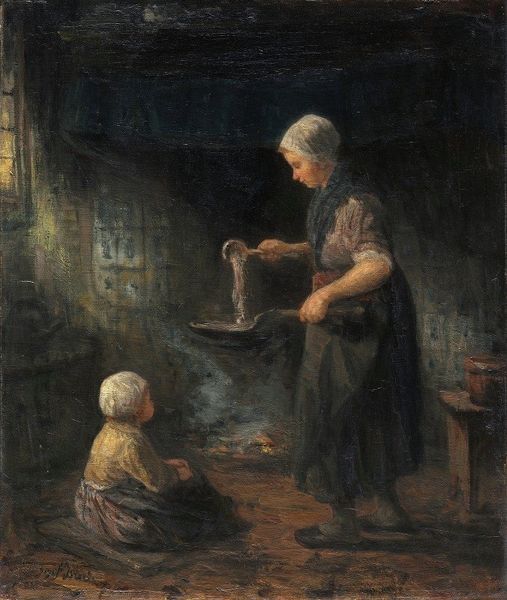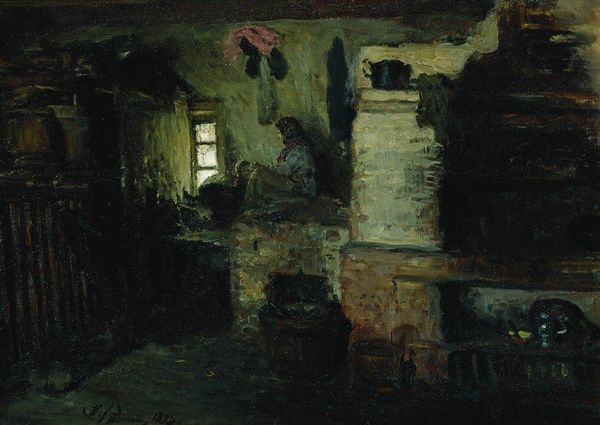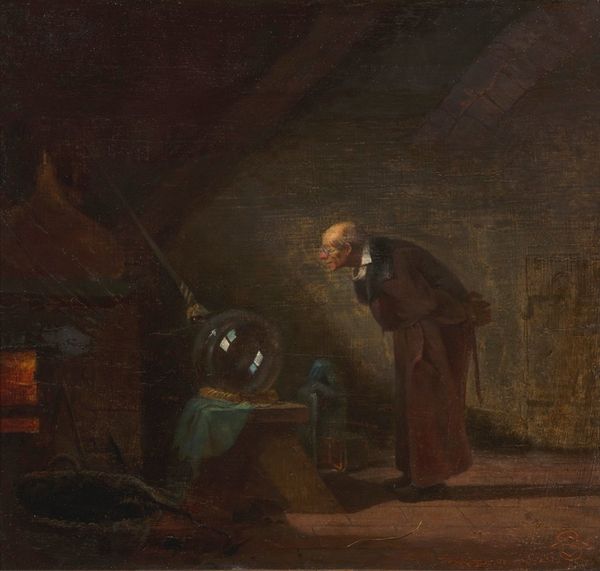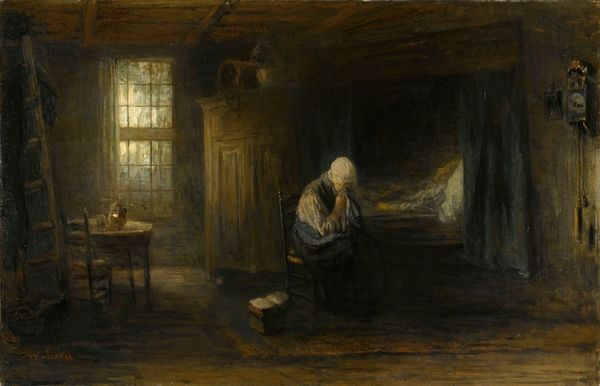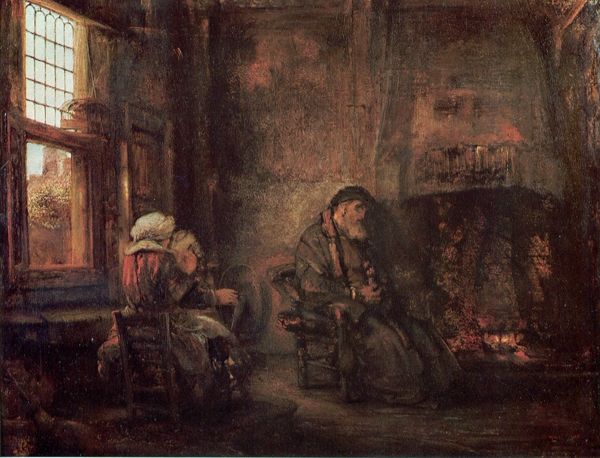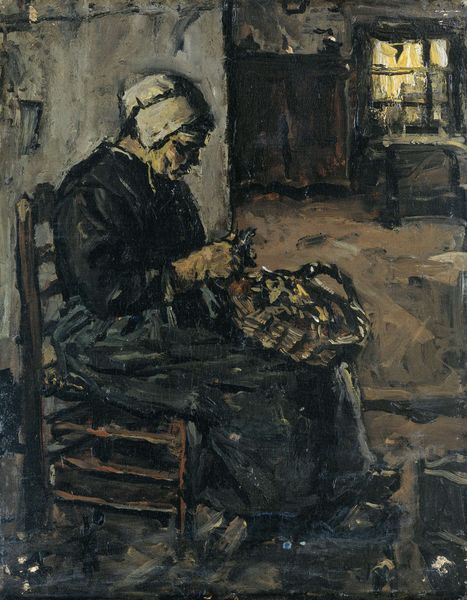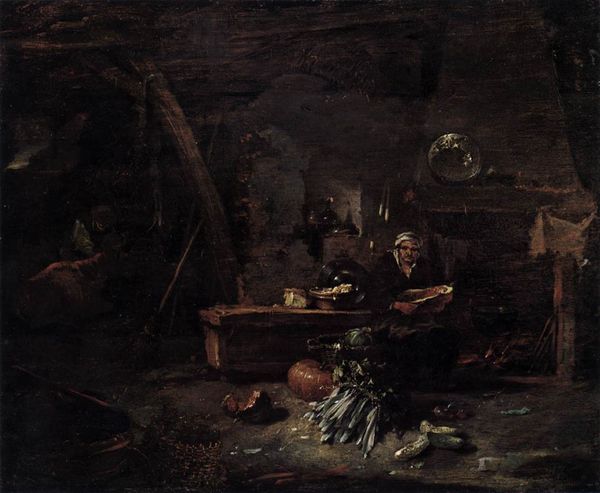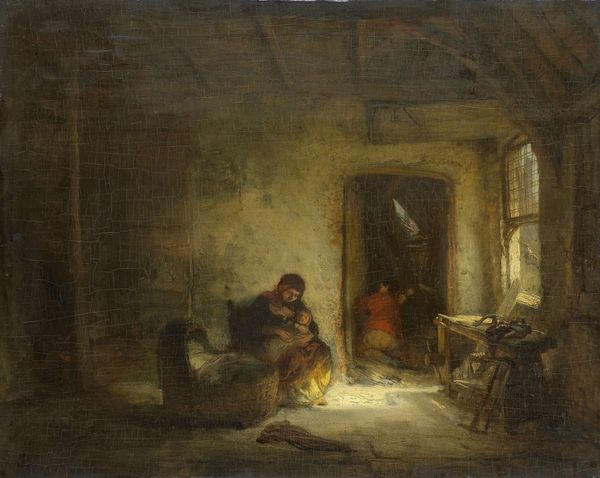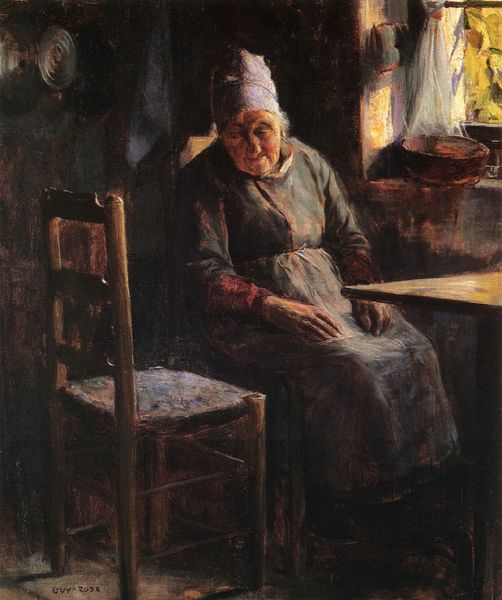
painting, oil-paint, impasto
#
portrait
#
figurative
#
dutch-golden-age
#
painting
#
oil-paint
#
oil painting
#
impasto
#
genre-painting
#
realism
Copyright: Public Domain: Artvee
Editor: So, this is Jozef Israëls' oil painting, "At The Hearth". It's not precisely dated, but feels evocative of 19th-century genre painting. I’m really struck by how the artist captured the scene’s quietness. How does this image speak to you? Curator: Considering Israëls within his time, and the growing accessibility of art to a wider public, this quiet scene served a vital social function. Does it strike you as sentimental, or something more complicated? Editor: Maybe more complicated? It feels like a constructed ideal, or…maybe curated, even back then? Curator: Exactly. Genre paintings like this presented curated glimpses into the lives of the less privileged, influencing social perceptions and perhaps, subtly, societal will. Israëls’ realism isn't just about depicting accurately, it’s about framing poverty for public consumption. What do you think the warm hearth implies in this carefully constructed narrative? Editor: A sense of domesticity, of basic human comfort in contrast with, perhaps, hardship, but also, isn't there a visual appeal to those glowing embers that sentimentalizes, or at least softens, a realistic depiction of life? It looks…staged? Curator: The art world itself played a key role in establishing realism's style, and Israëls navigated it adeptly. Did the intended audience seek authenticity, or something that fit with pre-conceived notions? It makes you wonder who this painting was really *for.* Editor: That's a perspective I hadn't considered. Seeing it as part of a larger social and political dynamic opens up entirely new avenues of inquiry! Thank you. Curator: Indeed. Thinking about the socio-political influences reminds us how artworks exist far beyond the frame itself.
Comments
No comments
Be the first to comment and join the conversation on the ultimate creative platform.

